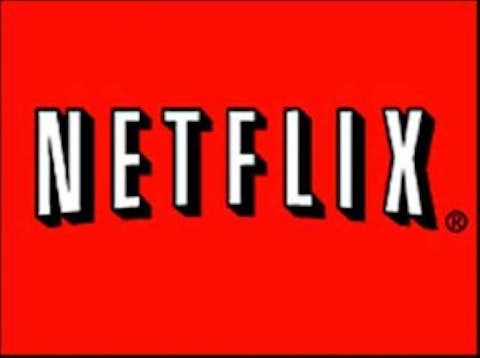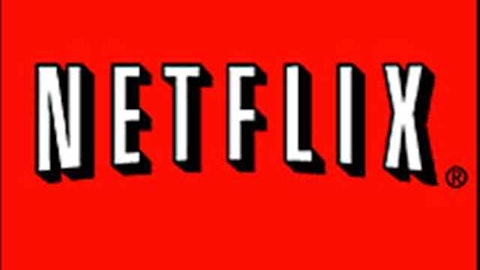
Still, the company’s inability to break above the 30 million subscriber mark should stand out as an enormous red flag. Although shares fell nearly 5%, if Netflix is nearing market saturation, the company remains tremendously overvalued.
Future content costs
Netflix, Inc. (NASDAQ:NFLX) could have a big problem on its hands. The company has committed itself to buying a lot of expensive, exclusive content — deals with Dreamworks Animation Skg Inc (NASDAQ:DWA) and The Walt Disney Company (NYSE:DIS), not to mention more seasons of shows like House of Cards — and it needs more subscribers to pay for it.
BTIG analyst Rich Greenfield put it bluntly on the earnings call, noting that Netflix “literally can’t afford [its] content commitments.”
If Netflix, Inc. (NASDAQ:NFLX) can get the 60-90 million subscribers it thinks it can, then there’s no problem at all. A larger pool of subscribers should generate enough revenue to cover the cost of the content.
But if it can’t, then Netflix could be forced to increase the cost of its service (assuming existing subscribers will tolerate it), or dilute investors by issuing more equity. Either option isn’t particularly favorable.
HBO has been stuck near 30 million for years
The 30 million mark is significant because it’s one hurdle HBO has struggled to break. Time Warner Inc. (NYSE:TWX)’s premium network is praised for its amazing original content, but it’s never been able to attract a base of US subscribers more than 30 million.
As I’ve written previously, Netflix, Inc. (NASDAQ:NFLX) is (by its own admission) attempting to copy HBO’s business model. With House of Cards getting several Emmy nominations, Netflix is clearly on the road to being an Internet-only HBO. But can it surpass HBO in terms of popularity?
The number of cable subscribers in the US is roughly 100 million — a figure that’s been stable for years. About a third of those subscribers get HBO — also a relatively stable figure.
Part of the reason for HBO’s stagnant growth is its cost. Although an HBO subscription itself may cost just $10-20 per month, that’s on top of a basic cable package that may cost as much as $1,200 per year.
For people to get HBO, they must commit to getting a full cable package — and all the headaches and bills that come with it. Contrast that with Netflix, Inc. (NASDAQ:NFLX). It charges just $8 per month, allows its members to easily cancel, and only requires Internet access.
There are other factors that could limit Netflix
But cost and ease of access aren’t the only potential limiting factors. It’s quite possible that HBO only has 30 million subscribers because that’s just the size of the market.
And while HBO may have a steep cost hurdle, Netflix, Inc. (NASDAQ:NFLX) has challenges of its own. Getting Internet-based content to TVs still isn’t easy, particularly among older consumers.
For example, my 80-year old grandmother watches far more TV than I do, and would probably get a lot of enjoyment from a Netflix subscription. However, she has a difficult time just using her DVD player, let alone a streaming box like the Roku.
Cutting the cord, but not the one you’re expecting
Some have seen Netflix, Inc. (NASDAQ:NFLX) as the force behind “cord-cutting” — the growing percentage of the population that’s ditching cable. Obviously, someone who’s satisfied with Netflix for their entertainment needs might be more likely to ditch cable, while someone who’s ditched cable may be more likely to get a Netflix subscription.
Yet, there’s actually a much more prevalent form of cord-cutting going on. But it’s not one that’s favorable to Netflix’s business.
The Wall Street Journal reported in May that Americans are cancelling their Internet more often than they’re ditching cable. These consumers are likely turning to their smartphone’s data network.
And while Sprint Nextel Corporation (NYSE:S) still offers unlimited data, the majority of consumers have AT&T Inc. (NYSE:T) and Verizon Communications Inc. (NYSE:VZ) — and they don’t. A limited AT&T Inc. (NYSE:T) or Verizon Communications Inc. (NYSE:VZ) wireless data plan is not suitable to supporting a Netflix subscription.
Netflix’s growing competition
At the same time, Netflix, Inc. (NASDAQ:NFLX) could be pressured by rising content costs. Amazon.com, Inc. (NASDAQ:AMZN) has moved into original programming as well, and competition from the Internet retailer could force Netflix to pay more.
Perhaps Amazon’s bid was the reason Netflix was unable to reach a deal with Viacom, Inc. (NASDAQ:VIAB). Netflix lost a great deal of children’s programming this quarter when it did not renew its deal with Viacom, Inc. (NASDAQ:VIAB); instead, Amazon.com, Inc. (NASDAQ:AMZN) reached an exclusive deal for that content on its Prime streaming service.
Netflix, Inc. (NASDAQ:NFLX)’s CEO Reed Hastings has trashed Amazon Prime Instant Video in the past, calling it a “confusing mess” in an interview with The Wall Street Journal. He argued that Netflix as a company was built to offer a better service, as it had no retail operation to get distracted with.
Yet, that retail operation could be an advantage to Amazon.com, Inc. (NASDAQ:AMZN) Prime Video. Along with video, Prime subscribers get free two-day shipping. Amazon could decide to ramp up content costs on Prime Video as a way to get more retail goods customers, using the service as a loss-leader. Netflix doesn’t have that option.
At the same time, there have been reports that HBO is mulling an alternative subscription model, allowing non-cable subscribers to get access to its web-based content. Already, HBO Go is offered separately in Scandinavia; were Time Warner Inc. (NYSE:TWX) to bring the option to the US, it would instantly become Netflix, Inc. (NASDAQ:NFLX)’s most formidable threat.
Investing in Netflix
Right now, Netflix appears to be valued on the basis of the company’s guidance; that is to say, Netflix can double or triple its number of US subscribers.
But if it can’t, it will run into some significant issues. Based on its content obligations, it could be forced to raise prices or issue new shares — both would be bad for investors.
Ultimately, Netflix, Inc. (NASDAQ:NFLX) shareholders need to keep a close eye on its number of US subscribers — that number alone could determine the company’s success.
Joe Kurtz has no position in any stocks mentioned. The Motley Fool recommends Amazon.com and Netflix. The Motley Fool owns shares of Amazon.com, Inc. (NASDAQ:AMZN) and Netflix, Inc. (NASDAQ:NFLX).
The article Netflix’s Earnings Report Could Be Worse Than Investors Think originally appeared on Fool.com.
Salvatore “Sam” is a member of The Motley Fool Blog Network — entries represent the personal opinion of the blogger and are not formally edited.
Copyright © 1995 – 2013 The Motley Fool, LLC. All rights reserved. The Motley Fool has a disclosure policy.



